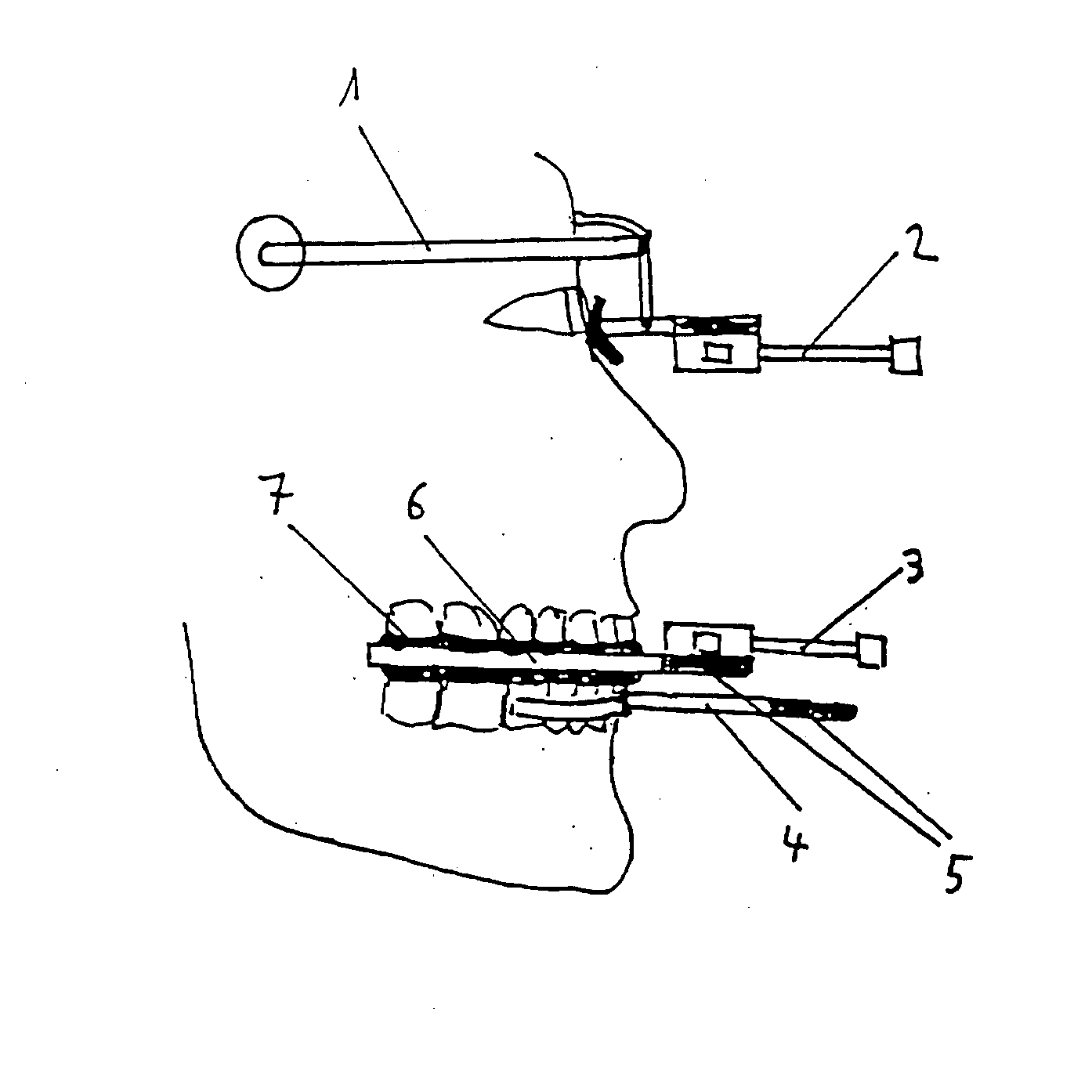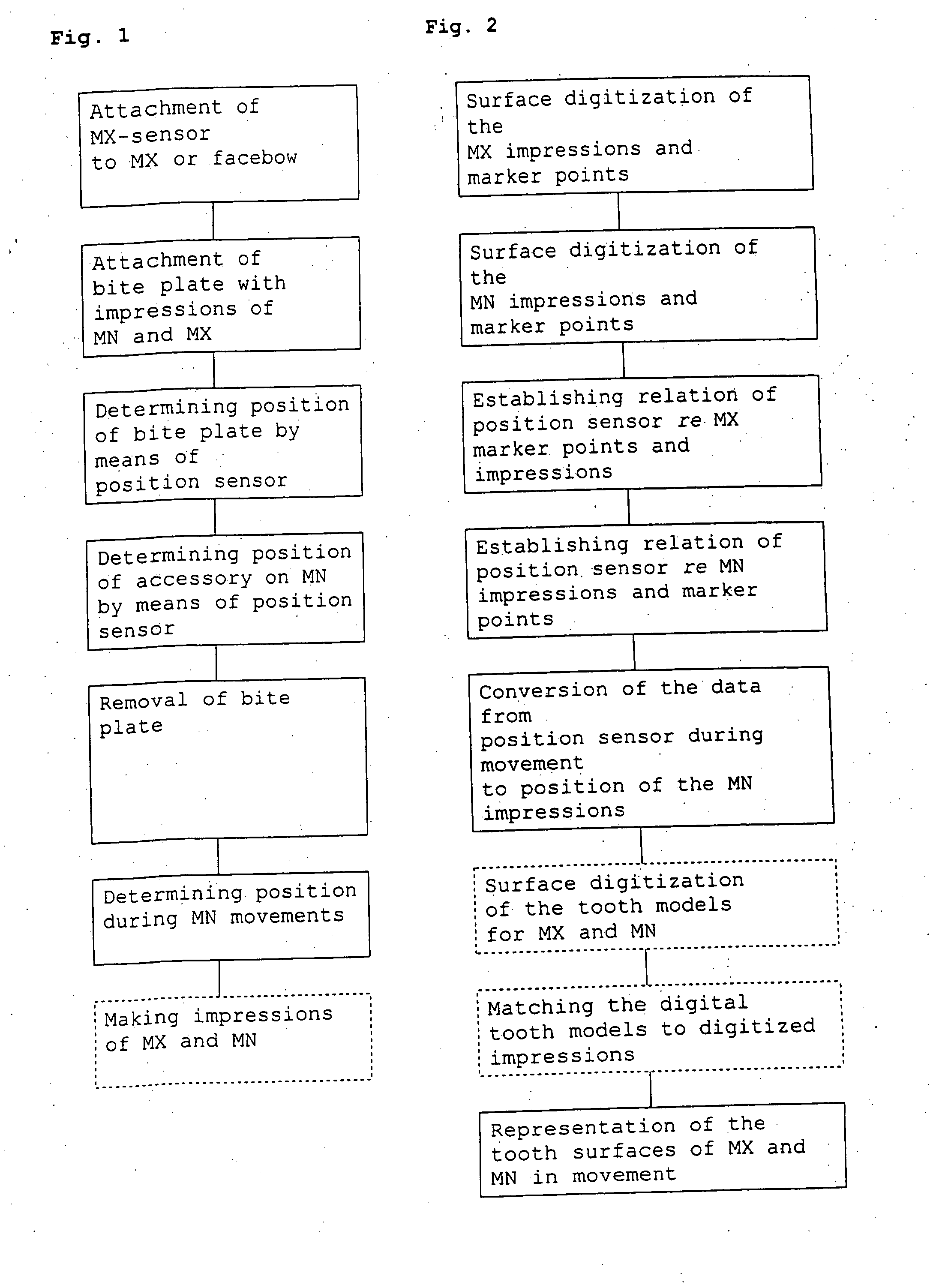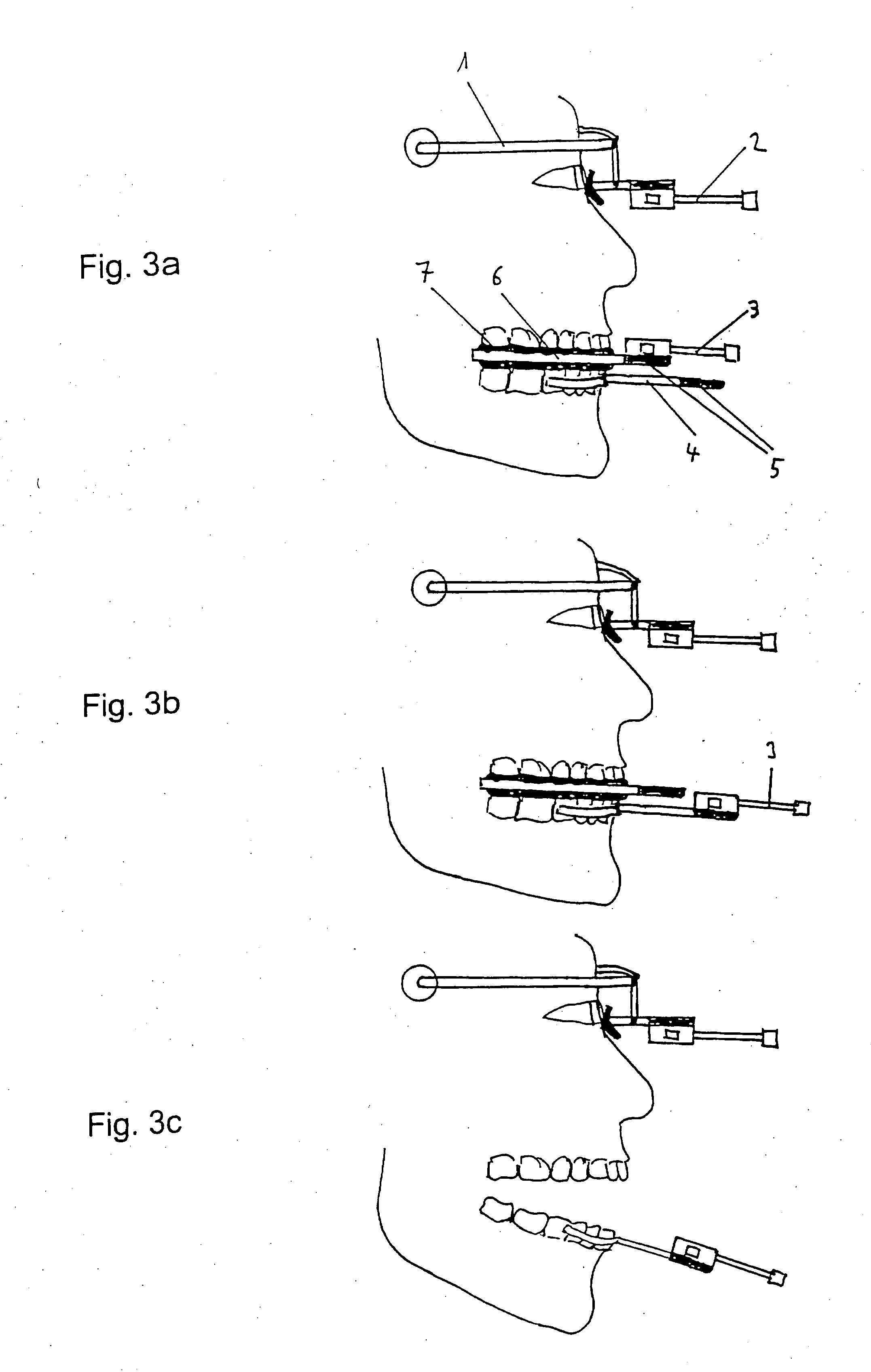Method and apparatus for the 3-Dimensional analysis of movement of the tooth surfaces of the maxilla in relation to the mandible
a technology of tooth surfaces and mandibles, applied in the field of 3dimensional analysis of movement, of the tooth surfaces of the maxilla, can solve the problems of laborious implementation
- Summary
- Abstract
- Description
- Claims
- Application Information
AI Technical Summary
Benefits of technology
Problems solved by technology
Method used
Image
Examples
Embodiment Construction
[0062] In FIG. 1 a preferred and especially simple form of measurement procedure is set out. Here a bite plate with recording substance on both sides should be used. The production of supplementary impressions, for example from plaster, is optional.
[0063]FIG. 2 shows the steps needed for evaluation.
[0064] In FIG. 3a is shown a measurement arrangement that comprises a facebow 1, an MX-sensor 2, a position sensor 3, a sensor holder for MN 4 with holding device 5, a bite plate 6, which may take the form of a bite fork, and deformable recording substance. When the measurement sensors are arranged as shown here, the position of the bite plate is determined.
[0065] In FIG. 3b the position sensor 3 is used as a mandibular sensor. With this arrangement at least one positional measurement is carried out.
[0066]FIG. 3c shows the arrangement for carrying out the measurement. When position sensors are used that employ the principle of measuring the transit times of ultrasound pulses, the posi...
PUM
 Login to View More
Login to View More Abstract
Description
Claims
Application Information
 Login to View More
Login to View More - R&D
- Intellectual Property
- Life Sciences
- Materials
- Tech Scout
- Unparalleled Data Quality
- Higher Quality Content
- 60% Fewer Hallucinations
Browse by: Latest US Patents, China's latest patents, Technical Efficacy Thesaurus, Application Domain, Technology Topic, Popular Technical Reports.
© 2025 PatSnap. All rights reserved.Legal|Privacy policy|Modern Slavery Act Transparency Statement|Sitemap|About US| Contact US: help@patsnap.com



